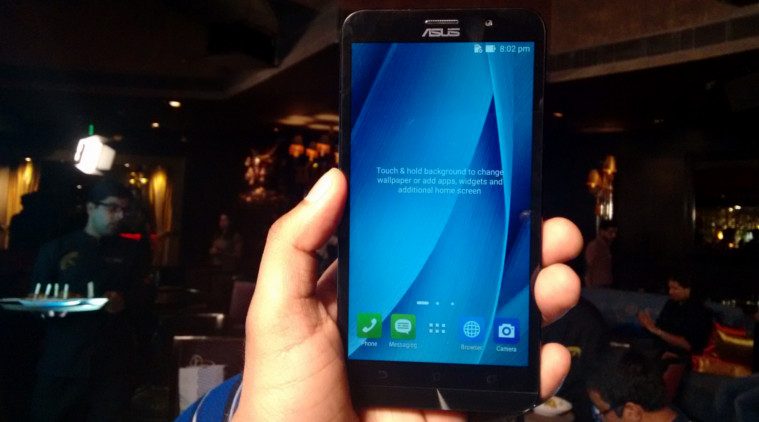Asus Zenfone 2 vs OnePlus One: The battle of the 64GBs
Asus has launched the Zenfone 2 in India, which is the world's first smartphone with 4GB RAM. We compare it to the 64 GB OnePlus One smartphone.
Asus has launched the Zenfone 2 in India, which is the world’s first smartphone with 4GB RAM. The Zenfone 2 will be available in four variants. Two variants of the Zenfone 2 ZE 551 ML model come with 4G RAM and 2GB RAM respectively (both with 1080p display) and the ZE 550 ML model with 720p display and 2GB RAM.
The price for the 4GB RAM version of the smartphone is Rs 22,999 for the 64GB version. While there’s been considerable interest in the Asus Zenfone 2, there is another competitor which will be worried post-this launch which is the OnePlus One. We take a look at a basic tech specification comparison between the two smartphones.
Design, Screen: The Asus Zenfone 2 has a 5.5-inch full HD screen with IPS+ and Corning Gorilla Glass 3, which is the same as the OnePlus One.
Where design goes, the Asus Zenfone 2 has brushed metal finish in the back, and curved case. The smartphone is 3.9 mm thick at the edges. Asus also says the Zenfone 2 has a “72% screen-to-body ratio that provides a maximised viewing experience”.
 On the design front, the Zenfone 2 has the curved metal look of HTC flagship phones along with rear button design of the LG. While the rear might appear to be made of metal, it’s actually plastic with a brushed metallic finish.
On the design front, the Zenfone 2 has the curved metal look of HTC flagship phones along with rear button design of the LG. While the rear might appear to be made of metal, it’s actually plastic with a brushed metallic finish.(Source: Debashis Sarkar)
Like LG, Asus has moved the volume-control key on the rear of the smartphone, but the power button is strangely on top. For customers, who value familiarity this design change might just be hard to accept. It is odd that one button is on the top while the other two are at the back. The Zenfone 2 will come in five colours Black, Gold, Gray, Red and White.
The OnePlus One also has a full HD 5.5-inch screen with LTPS IPS with Corning Gorilla Glass 3. The screen has TOL (Touch On Lens) technology, which removes the distance between the touch sensor and the display panel and thus allows the screen to respond instantly to a user’s touch. OnePlus One comes in two colours silk white and sandstone black.
The 64GB black OnePlus One has a matte finish granite-like Moonstone rear panel which really makes the smartphone stand-out. In terms of design, the smartphone is 8.9 mm thick and weighs 162g and the power button is on the left, while the volume buttons are on the right, just below the SIM slot. It’s a more familiar design, which some users might prefer.
Processor, RAM, Storage: The OnePlus One smartphone has Qualcomm Snapdragon 801 processor with 2.5GHz Quad-core and comes with 3GB RAM and 64GB internal storage and no external slot.
The Asus Zenfone 2 on the other hand has a 64-bit Intel Atom Z3580 processor clocked at 2.3GHz. It has 4GB RAM, which explains the considerable interest in the smartphone and like the OnePlus One, there is a 64 GB version of this smartphone as well.
 Asus Zenfone 2 will be exclusively available on Flipkart.
Asus Zenfone 2 will be exclusively available on Flipkart.
OnePlus One has been popular among Indian consumers and we had noted in our review that this is one of the fastest and smoothest smartphones in the market. It remains to be seen how Zenfone 2 clocks once we get our hands on the device.
Camera: The OnePlus One has a 13MP rear camera and a 5 megapixel front camera. The rear camera supports 4K video recording with slow-motion. Where the camera’s performance goes, we had seen its pretty fast and there is a burst mode that lets you click up to 20 frames in one go. The results we got with the OnePlus were quite good with great details, even in macro shots.
With Asus Zenfone 2, the company has a given it a 13MP rear-facing and 5MP front-facing. Both have PixelMaster cameras which Asus claims offer enhancements like Low Light mode on both the rear and front cameras, 400% brighter photos and videos at night.
Asus says the Zenfone 2 has “blue glass infrared filter” which makes capture backlit scenes very easy and that there is zero-shutter lag on the camera. Asus has tweaked the camera to allow users to tinker with ISO settings, aperture, etc for those who want the DSLR-like experience.
Battery: Asus Zenfone 2 has a 3000mAh battery and the company claims that this has a full day’s life on one single charge. The Zenfone 2 also comes with BoostMaster technology which enables twice as fast charging, letting users charge ZenFone 2 from from 0% to 60% in just 39 minutes, says the company.
In case of the OnePlus One, the battery is a 3100 mAh battery and in our review we saw that the smartphone easily lasted a whole day. So the Asus Zenfone 2 will have to life up to its claims of a full-day battery, if it plans to compete with OnePlus One.
OS and connectivity options: Asus Zenfone 2 has an Android 5.0 Lollipop with ZenUI skin running on top of it. If you want the latest version of Android, Zenfone is the device to consider, although the ZenUI might not be something you want on Android Lollipop.
The OnePlus One runs Cyanogen 11S based on Android 4.4. OnePlus has released a hard to master update for its new Oxygen OS based on Android 5.0. With Oxygen OS, you get features like off-screen gestures, new to a pure Android phone. It gives you customisation likes the old OS, although installing the OS is a tedious process.
You might want to read more on that here.
In terms of connectivity, the One Plus One supports 4G with nano and micro SIM trays in box, which is great. However it’s not a Dual-SIM phone. The OnePlus One supports Wi-Fi 802.11 b/g/n/ac, Bluetooth 4.0 and NFC as well as USB OTG that allows users to directly plug in a flash drive to your phone.
The Asus Zenfone 2 has a support for Bluetooth 4.0 with A2DP, Wi-Fi Direct, Wi-Fi hotspot (tethering) and NFC support. Unlike OnePlus One, Zenfone 2 is a dual-SIM smartphone with Dual SIM Dual Active (DSDA) technology which lets you take calls from a second SIM even if you are on the first SIM. Zenfone also supports USB OTG.
Pricing: The OnePlus One 64GB version costs Rs 21,998 (it’s Re 1 less than before) while the Asus Zenfone 2 will cost Rs 22,999 making the Zenfone slightly more expensive. In the end, as a consumer, it will all boil down to your preferences, whether you want that extra GB of RAM or not, because where the rest of the specs are concerned, it looks like a pretty an even match.









